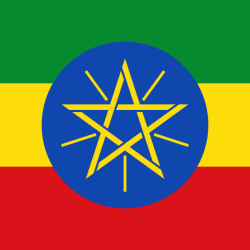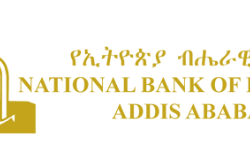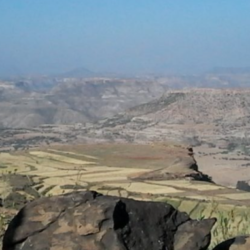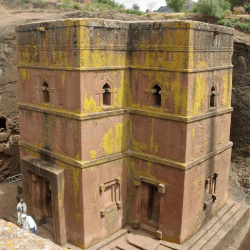Tsehay is the first aircraft built in Ethiopia in 1935, under the collaborative efforts of the German engineer and pilot of the emperor, Herr Ludwig Weber, and Ethiopian individuals of that era.
In 1935, Ethiopia marked a historic milestone in aviation with the construction of its first aircraft, Tsehay. Named after the Amharic word for “sun,” Tsehay was built through the collaborative efforts of the German engineer and pilot, Herr Ludwig Weber, and skilled Ethiopian individuals. This groundbreaking achievement symbolized Emperor Haile Selassie’s ambition to modernize Ethiopia and develop its aviation industry.
Despite the challenges of the time, including limited technological infrastructure and the impending threat of Italian invasion, Ethiopia’s successful aircraft construction remains a remarkable feat in African aviation history. This article delves into the vision, construction, challenges, and legacy of Tsehay, shedding light on Ethiopia’s early strides in aeronautical engineering.
The Vision Behind Tsehay
The Role of Emperor Haile Selassie
Emperor Haile Selassie I was a forward-thinking leader with a deep desire to modernize Ethiopia in the early 20th century. Recognizing the potential of aviation, he aimed to develop an Ethiopian Air Force and improve the country’s military and commercial aviation capabilities. Under his leadership, Ethiopia pursued collaborations with European experts, including Germany, to establish a foundation for aviation.
The German Influence – Herr Ludwig Weber
Herr Ludwig Weber, a German engineer and pilot, played a crucial role in Ethiopia’s aviation efforts. As one of the emperor’s trusted foreign advisors, Weber was instrumental in designing and overseeing the construction of Tsehay. His expertise, combined with Ethiopia’s skilled artisans, led to the creation of an entirely Ethiopian-assembled aircraft, a groundbreaking achievement for the time.
The Making of Tsehay – Ethiopia’s Engineering Breakthrough
Collaboration Between Ethiopia and Germany
The construction of Tsehay was a joint effort between Ethiopian craftsmen and German engineering expertise. Ethiopian workers were trained in aircraft assembly, learning essential aeronautical engineering skills under Weber’s guidance. This collaboration reflected the country’s determination to become self-sufficient in aviation technology.
Specifications and Features of Tsehay
Although exact specifications of Tsehay are scarce, historical records suggest that it was a light, single-engine aircraft, designed primarily for training and reconnaissance. The aircraft was assembled using locally available materials wherever possible, showcasing Ethiopia’s resourcefulness in aeronautical engineering.

The Historic Flight of Tsehay
The first flight of Tsehay was a significant moment in Ethiopian history. It demonstrated the country’s ability to construct and operate an aircraft independently, despite the odds. However, its success was overshadowed by the looming Italian invasion of Ethiopia in 1935, which disrupted the nation’s aviation advancements.

Challenges and Obstacles
Building an aircraft in Ethiopia during the 1930s was no small feat. The project faced:
- Limited access to advanced aeronautical materials
- Lack of local expertise in aviation technology
- Political tensions and war threats from Italy
Despite these setbacks, Tsehay’s creation remains a symbol of Ethiopian innovation and ambition.
The Legacy of Tsehay in Ethiopian Aviation
Impact on Modern Ethiopian Aerospace
Although Tsehay did not lead to an immediate aircraft manufacturing industry in Ethiopia, it laid the foundation for future aviation developments. Today, Ethiopia boasts:
- Ethiopian Airlines, Africa’s leading airline
- A growing aerospace industry, including aircraft maintenance and manufacturing partnerships
- The Ethiopian Air Force, which has expanded its capabilities over the decades
Where is Tsehay Now?
In February, 2024 Ethiopians celebrated the official handover of “Tsehay” by the Italian Government. They extended gratitude to Prime Minister Giorgia Meloni for her support over the past year in facilitating its return.
Lessons Learned from Ethiopia’s First Aircraft Project
- Early investment in technology can shape a country’s future.
- Collaborations between local talent and foreign experts can lead to groundbreaking achievements.
- Even in difficult times, innovation can thrive with strong leadership and vision.
FAQs About Tsehay – Ethiopia’s First Aircraft
1. Who built Tsehay, Ethiopia’s first aircraft?
Tsehay was built in 1935 by Ethiopian engineers and craftsmen under the guidance of German pilot and engineer Herr Ludwig Weber.
2. Why was the aircraft named Tsehay?
The aircraft was named Tsehay, meaning “sun” in Amharic, symbolizing Ethiopia’s bright future in aviation.
3. Did Tsehay fly successfully?
Yes, Tsehay successfully flew, marking Ethiopia’s first locally assembled aircraft flight.
4. What happened to Tsehay after its flight?
It was likely taken away during the Italian invasion of Ethiopia in 1935-1936. In 2024 it was returned back to Ethiopia after intense efforts by the Ethiopian government to that effect.
5. What is Ethiopia’s aviation status today?
Ethiopia is home to Ethiopian Airlines, one of Africa’s top carriers, and is investing in aerospace technology and aviation training.
6. Did Tsehay influence Ethiopia’s aviation industry?
Yes, Tsehay was a pioneering effort that paved the way for Ethiopia’s future in aviation and engineering.











